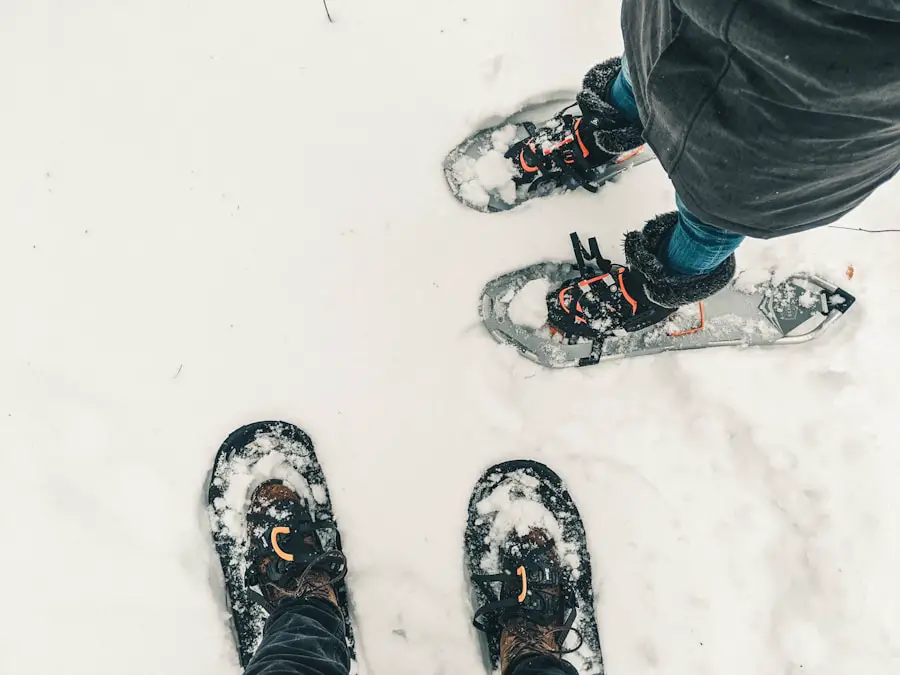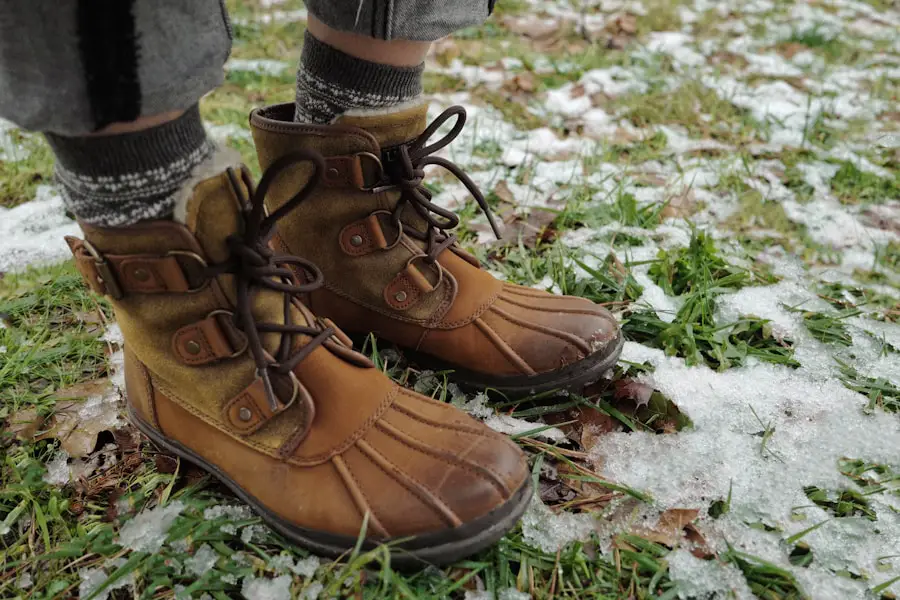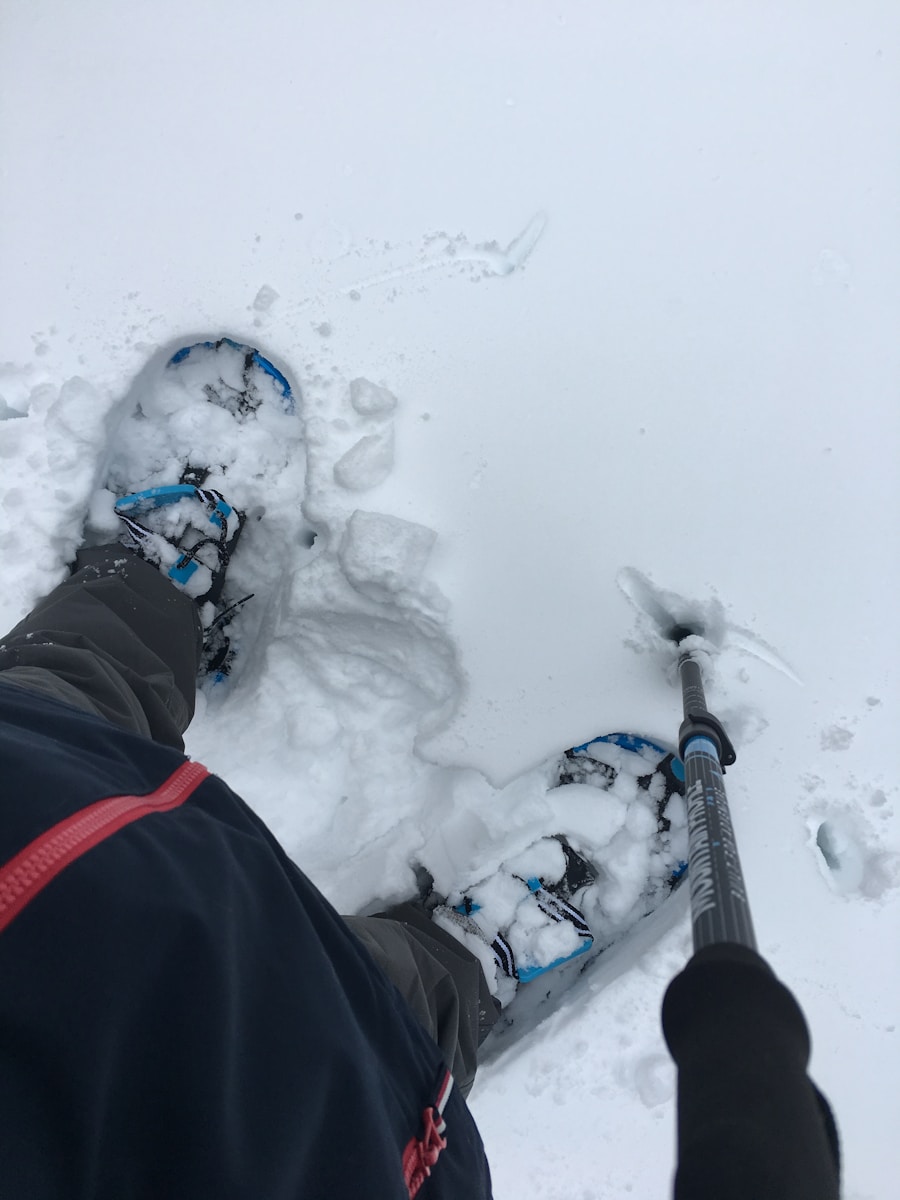When venturing into the great outdoors, the choice of footwear can significantly impact your experience, especially when comparing hiking boots to snow boots. Hiking boots are designed primarily for rugged terrain, providing support and stability on uneven surfaces. They typically feature a stiffer sole, which aids in navigating rocky trails and steep inclines.
The materials used in hiking boots often prioritize breathability and lightweight construction, allowing for comfort during long treks. However, this design focus can sometimes compromise their performance in snowy conditions. In contrast, snow boots are specifically engineered to handle cold, wet environments.
They often incorporate thicker insulation to retain warmth and are constructed with waterproof materials to keep moisture at bay. The soles of snow boots are designed with deeper treads to provide better grip on slippery surfaces, such as ice and packed snow. While hiking boots may offer some level of protection against the elements, they lack the specialized features that snow boots provide, making them less suitable for winter conditions.
Understanding these fundamental differences is crucial for anyone planning to traverse snowy landscapes.
Key Takeaways
- Hiking boots are designed for hiking on dry terrain, while snow boots are specifically made for walking in snowy and wet conditions.
- Factors to consider when using hiking boots for snow include insulation, traction, and waterproofing capabilities.
- Insulation is crucial in snow boots to keep your feet warm and protected from the cold, while hiking boots may require additional insulation for snow use.
- Hiking boots may not provide the same level of traction and grip as snow boots in snowy conditions, making them less suitable for use in the snow.
- While some hiking boots offer waterproofing features, they may not be as effective as snow boots in keeping your feet dry in the snow.
Factors to Consider When Using Hiking Boots for Snow
Temperature Considerations
Hiking boots may not offer sufficient insulation for extreme cold, which can lead to discomfort or even frostbite during prolonged exposure. If temperatures are expected to drop significantly, it may be wise to opt for dedicated snow boots that provide enhanced thermal protection.
Snow Type and Waterproofing
The type of snow you will encounter is another critical factor. Wet, heavy snow can quickly saturate hiking boots that lack waterproofing features, leading to cold and soggy feet. Conversely, light, powdery snow may not pose as much of a threat, but the risk of slipping increases without adequate traction.
Duration of Outing and Footwear Choice
The duration of your outing should also be considered; longer hikes in snowy conditions may necessitate footwear that can withstand prolonged exposure to cold and moisture. Evaluating these factors will help determine whether hiking boots can adequately meet your needs in winter conditions.
The Importance of Insulation in Snow Boots

Insulation is a key feature that distinguishes snow boots from their hiking counterparts. Snow boots typically utilize materials such as Thinsulate or fleece linings that trap heat while allowing moisture to escape. This balance is essential for maintaining warmth without causing overheating or sweat accumulation, which can lead to chilling once you stop moving.
The thickness of insulation varies among models, with some designed for extreme cold and others suitable for milder winter conditions. In contrast, many hiking boots prioritize breathability over insulation, which can leave your feet vulnerable in frigid temperatures. While some hiking boots may include a thin layer of insulation, it often falls short of what is necessary for extended exposure to cold environments.
For instance, a typical hiking boot might feature a mesh lining that promotes airflow but does little to retain heat. Therefore, when selecting footwear for snowy adventures, understanding the insulation properties of snow boots becomes paramount for ensuring comfort and safety.
Traction and Grip: How Hiking Boots Measure Up in Snowy Conditions
| Boot Model | Traction Rating (out of 5) | Grip on Snow (out of 10) |
|---|---|---|
| Salomon X Ultra 3 Mid GTX | 4.5 | 9 |
| Merrell Moab 2 Mid Waterproof | 4 | 8 |
| Columbia Newton Ridge Plus II Waterproof | 3.5 | 7 |
| Keen Targhee II Mid Waterproof | 4.5 | 9 |
Traction is another critical aspect when evaluating footwear for snowy conditions. Snow boots are designed with specialized outsoles that feature deep lugs and patterns optimized for gripping slippery surfaces. These outsoles often incorporate rubber compounds that remain flexible in cold temperatures, enhancing grip on ice and packed snow.
The design of snow boot soles allows for better weight distribution, which helps prevent slipping and provides stability on uneven terrain. Hiking boots, while equipped with rugged outsoles suitable for rocky trails, may not perform as well in snowy conditions. The tread patterns on many hiking boots are designed for traction on dirt and gravel rather than ice or snow.
As a result, they may struggle to provide the necessary grip when traversing slick surfaces. Some hiking boots do offer a more aggressive tread pattern that can handle light snow; however, they still fall short compared to dedicated snow boots. For those planning to hike in winter conditions, understanding the limitations of hiking boot traction is essential for ensuring safety on the trail.
Waterproofing: Can Hiking Boots Keep Your Feet Dry in the Snow?
Waterproofing is a crucial feature for any footwear intended for snowy conditions. Snow boots typically employ waterproof membranes such as Gore-Tex or proprietary materials that prevent moisture from penetrating while allowing sweat to escape. This dual functionality is vital for keeping feet dry and comfortable during winter activities.
Additionally, many snow boots have higher shafts that help keep snow from entering the boot, further enhancing their protective capabilities. Hiking boots may also feature waterproofing technologies; however, their effectiveness can vary significantly between models. Some hiking boots are treated with water-resistant coatings that may repel light moisture but fail under heavy snowfall or slush conditions.
Furthermore, the lower cut of many hiking boots can allow snow to enter more easily than taller snow boots designed specifically for winter use. Therefore, while some hiking boots may offer a degree of waterproofing, they often do not provide the same level of protection as dedicated snow boots.
How to Modify Hiking Boots for Snow Use

For those who prefer to use their hiking boots in snowy conditions, there are several modifications that can enhance their performance. One effective approach is to add thermal insoles designed for cold weather. These insoles can provide an additional layer of insulation and comfort, helping to keep feet warm during winter hikes.
Look for insoles made from materials like wool or specialized foam that retains heat while providing cushioning. Another modification involves using gaiters, which are protective coverings worn over the top of your boots and lower legs. Gaiters help prevent snow from entering your boots and can also provide an extra layer of insulation against cold air.
They come in various heights and materials; selecting a pair that fits snugly around your ankles will ensure maximum protection against snow infiltration. Additionally, consider using traction devices such as crampons or microspikes that can be attached to the soles of your hiking boots to improve grip on icy surfaces.
Alternative Footwear Options for Snowy Conditions
While hiking boots can be modified for use in snowy conditions, there are several alternative footwear options specifically designed for winter environments that may be more suitable. One popular choice is insulated winter hiking shoes or boots that combine features from both hiking and snow footwear. These models often include waterproof membranes, enhanced insulation, and aggressive outsoles designed for traction on snow and ice.
Another option is mountaineering boots, which are built for extreme conditions and often feature rigid soles suitable for climbing icy terrain. These boots typically come with advanced insulation and waterproofing technologies but may be heavier than standard hiking or snow boots. For casual winter outings or urban environments, insulated winter shoes or even high-top sneakers with waterproof features can provide adequate protection while maintaining comfort and style.
Tips for Using Hiking Boots in the Snow Safely and Effectively
If you decide to use hiking boots in snowy conditions despite their limitations, there are several tips to ensure safety and effectiveness during your outing. First and foremost, always check the weather forecast before heading out; understanding temperature fluctuations and potential snowfall can help you prepare appropriately. Dress in layers to manage body heat effectively while keeping your feet warm and dry.
When navigating snowy terrain with hiking boots, take smaller steps to maintain balance and reduce the risk of slipping. If you encounter icy patches, consider using trekking poles for added stability; they can help distribute weight more evenly and provide support when traversing challenging sections of the trail. Additionally, be mindful of your surroundings; watch for signs of changing weather or shifting conditions that could impact your safety.
In conclusion, while hiking boots can be adapted for use in snowy conditions with careful consideration and modifications, they may not always provide the same level of performance as dedicated snow footwear. Understanding the differences between these types of boots and evaluating factors such as insulation, traction, waterproofing, and overall design will help ensure a safe and enjoyable experience in winter environments.
If you are considering using hiking boots for snow, you may also be interested in learning about the optimal time for European travel. Planning your trip to Europe at the right time can enhance your overall experience and ensure you make the most of your adventure. Check out this article for more information: Optimal Time for European Travel.
FAQs
Can I use hiking boots for snow?
Yes, you can use hiking boots for snow depending on the type of hiking boots and the conditions of the snow.
What type of hiking boots are suitable for snow?
Hiking boots with insulation, waterproofing, and good traction are suitable for snow. Look for boots with features such as Thinsulate insulation and Gore-Tex waterproofing.
Are all hiking boots suitable for snow?
Not all hiking boots are suitable for snow. It is important to consider the specific features of the boots such as insulation, waterproofing, and traction.
What should I consider when using hiking boots for snow?
When using hiking boots for snow, consider the temperature, depth of snow, and the terrain you will be hiking on. It is important to ensure that the boots provide enough warmth, protection, and traction for the snowy conditions.
Can I use hiking boots for snowshoeing?
Hiking boots can be used for snowshoeing, but it is recommended to use boots with good ankle support, waterproofing, and compatibility with snowshoes.
